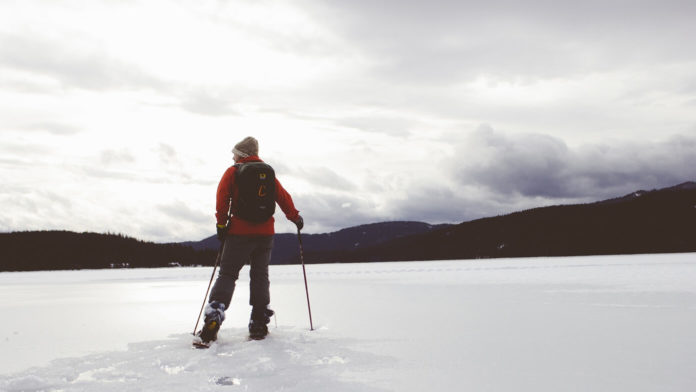When the temperature plummets, is it still safe to exercise outdoors? Cold-weather exercise physiologist Michael Kennedy says winter athletes should use caution to avoid lung damage.
“If it’s a really cold day in February, a high-intensity run or ski race could change your life,” said Kennedy, associate professor of kinesiology at the University of Alberta, in a press release.
When it’s so cold outside that it hurts to breathe, that cold air could damage lung tissue, permanently. In temperatures below around -15 ºC, it’s harder for the lungs to warm and humidify air as you breathe, especially if you’re breathing harder. As the lining of the airway dries out, inflammation sets in, and that can cause long-term complications.
“The inflammatory response is so large that the lungs never recover back to a healthy baseline,” added Kennedy.
That’s a problem for winter athletes like runners, skaters, and skiers who routinely exercise in freezing air. And according to Kennedy, that damage might be understated because the standard lab test for exercise-induced asthma isn’t picking up some cold-air athletes with lung damage.
In the standard lab test, lung function is tested by breathing dry air from a gas tank, provoking bronchoconstriction in the lungs that mimics what happens in cold air. Kennedy recruited 16 winter athletes who completed the standard lab test, but he also tested their lung function after a 5-kilometre run in -15 ºC weather.
While only five of the participants tested positive for exercise-induced bronchoconstriction in the standard test, seven tested positive after the cold-weather run. That’s just shy of half of the study participants, prompting important questions over the safety of outdoor exercise and racing when the temperature drops.
Exercise-induced asthma can result in coughing, wheezing, and difficulty breathing. Athletes should take particular caution if they taste blood or feel a sensation of burning in their lungs, both of which signal damage deep in the lungs.
For athletes determined to exercise in the winter, Kennedy recommends dropping the intensity, covering your mouth with a quick-dry material, and doing an indoor warm-up to help dilate your lungs before stepping out.
He also warns athletes not to go back indoors until their breathing rate slows back down to normal; as the lungs warm back up, elevated breathing causes even more water to be drawn out of the airway, making it important to warm the lungs only after returning to a resting breathing rate.
Physical activity is vital to health, but doing it safely is also key. So as the temperatures fall, winter athletes should be aware of the risks, protections, and their own limitations.








































